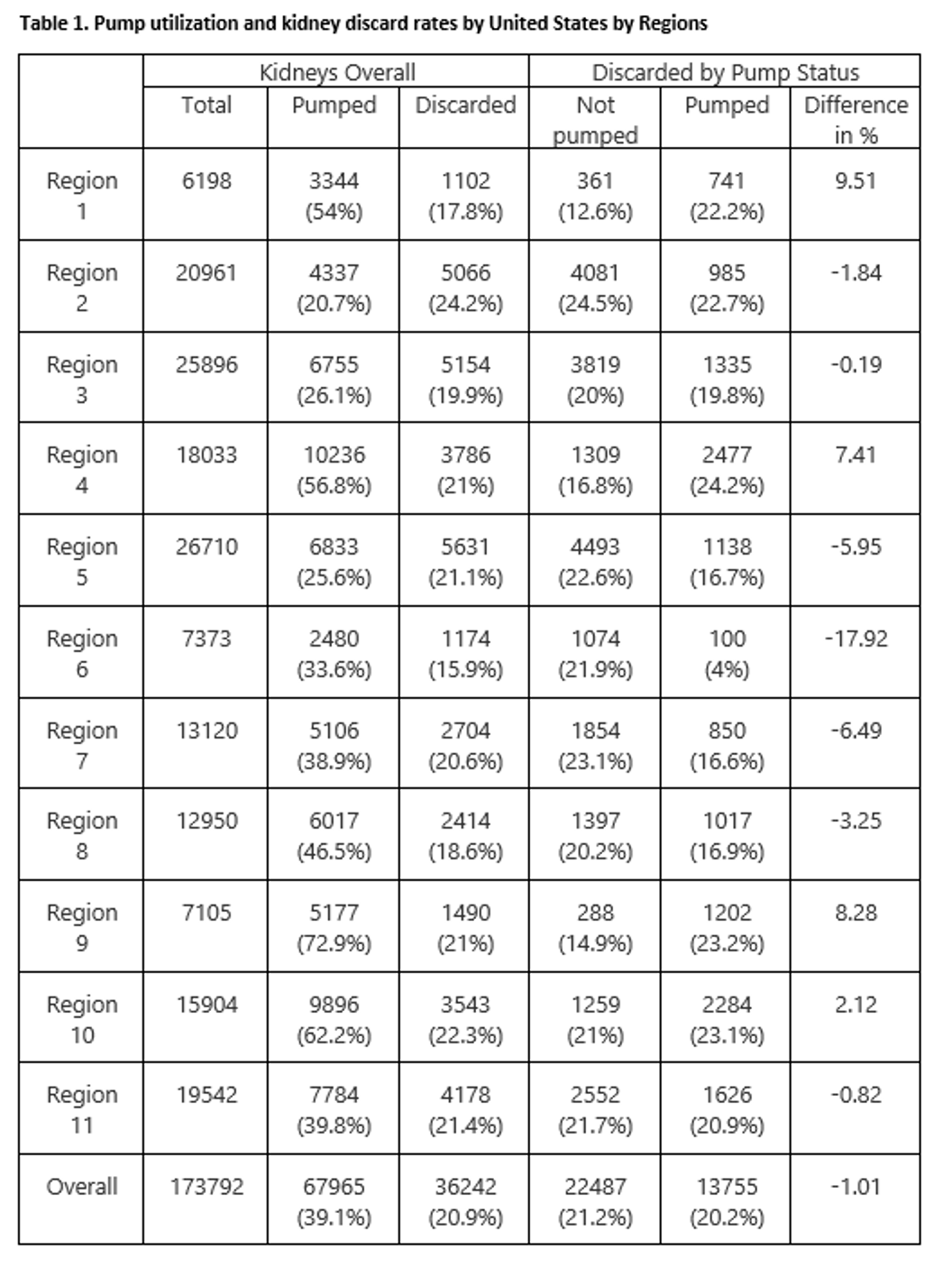Regional disparities in hypothermic machine perfusion pump utilization and kidney discard rates in the United States
Esther V Ovdat1, Amanda L Tapia2, Byron Smith 2, Hatem Amer3, Naim Issa3, Patrick G Dean1, Samy Riad3.
1Surgery- Transplant, Mayo Clinic Rochester , Rochester, MN, United States; 2Biostatistics and Clinical Trials, Mayo Clinic Rochester , Rochester, MN, United States; 3Medicine-Transplant Nephrology, Mayo Clinic Rochester , Rochester, MN, United States
Background: Overcoming the substantial hurdle of high kidney discard rates is crucial for facilitating timely transplants and alleviating organ shortage. This study describes the kidney discard rates associated with hypothermic machine perfusion across the 11 United Network for Organ Sharing (UNOS) regions in the United States.
Methods: Examining data from the Scientific Registry of Transplant Recipients (SRTR) spanning 2014 to 2022, we analyzed all procured kidneys for transplantation, focusing on those with available information on hypothermic machine perfusion pump utilization. Procured kidneys were categorized into two groups: the pumped group and the static cold storage group. Regional pump utilization rates and discard rates were calculated. Subsequently, we stratified discard rate by pump utilization for each region and overall. Finally, we visualized the net number of kidneys saved by region on a map of the United States.
Results: Our cohort comprised 173,792 deceased donor kidneys procured for transplantation during the study period. The overall hypothermic machine perfusion rate was 39.1% (n=67,965). The overall kidney discard rate was 20.9% (n=36,242). The discard rate for pumped kidneys was 20.2% (n=13,755), while static cold storage kidneys had a discard rate of 21.2% (n=22,487).
Table 1
 outlines the regional rates of pump utilization and discard rates. We calculated the crude additional number of transplanted kidneys according to pump utilization per 100 kidneys across regions (Figure 1).
outlines the regional rates of pump utilization and discard rates. We calculated the crude additional number of transplanted kidneys according to pump utilization per 100 kidneys across regions (Figure 1).

Interestingly, regions with a pump utilization rate exceeding 50% (regions 1, 4, 9, 10) had higher discard rates with pump utilization compared to static storage (range -9.5 to -2.1 fewer kidneys per 100 transplanted). All other regions had higher rates of transplantation with pump utilization.
Conclusion: Hypothermic machine perfusion utilization displays regional variations across the United States, with seemingly inconsistent outcomes in the number of additional transplanted kidneys. Notably, the overall discard rate was lower when hypothermic machine perfusion was employed. Further studies are essential for understanding regional variability in discard rates and other factors associated with pump utilization to optimize the efficacy of hypothermic machine perfusion.
The data reported here have been supplied by the Hennepin Healthcare Research Institute (HHRI) as the contractor for the Scientific Registry of Transplant Recipients (SRTR). The interpretation and reporting of these data are the responsibility of the authors and in no way should be seen as an official policy of or interpretation by the SRTR or the U.S. Government.
[1] Kidney Discard
[2] Machine Perfusion
